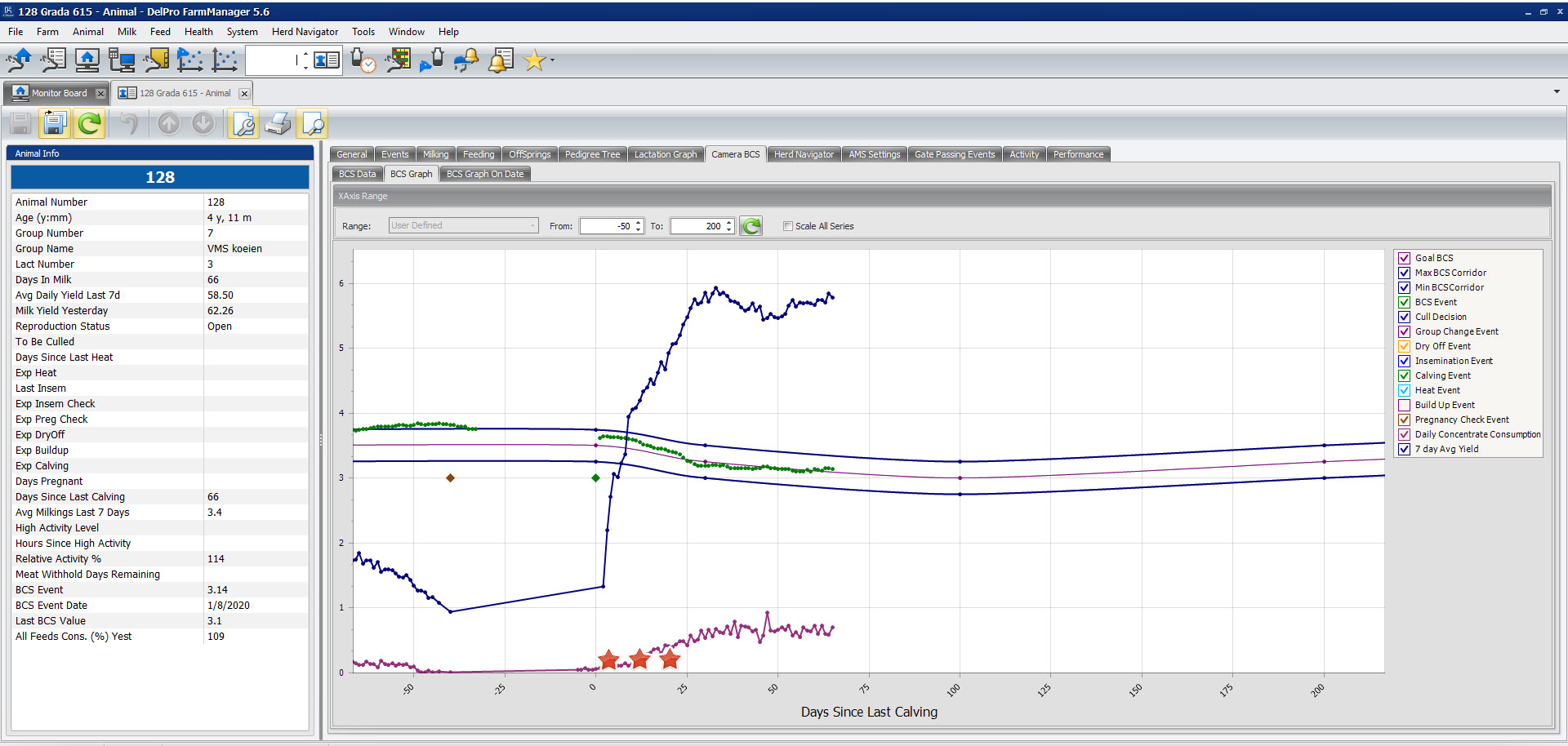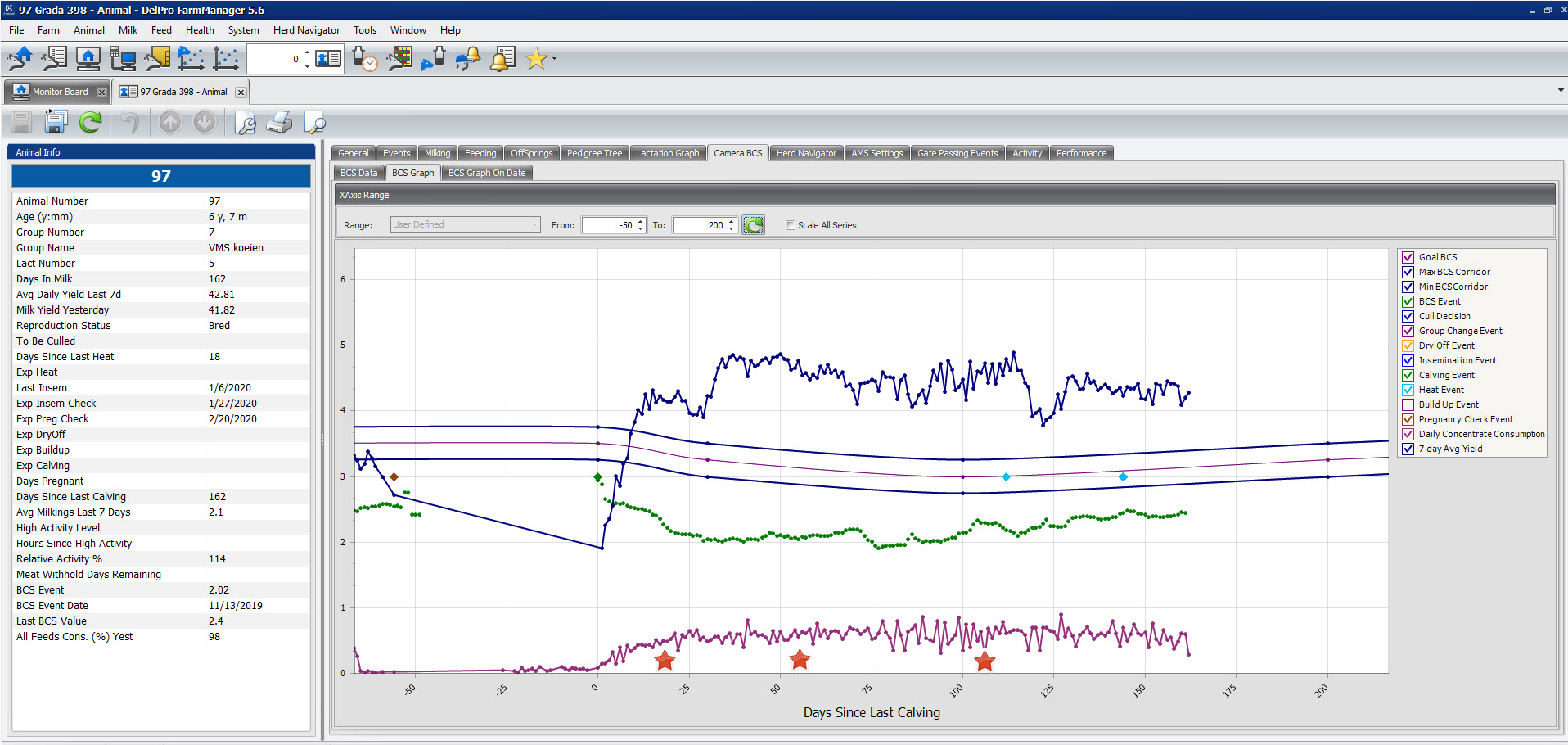Managing cow health with BCS data
Cows with ketosis have an increased risk of displaced abomasum, uterine infection and lameness. In addition to causing lower milk production by about 7% compared to a healthy cow (Van Leenen, 2015) and there is also reduced fertility and risk of early culling of cows. (Vanholder, Papen, Bemers, Vertenten, & Berge, 2015)
Having cows in the right condition towards the dry period and to maintaining it through the dry period can help prevent Ketosis so aim to dry off cows with a BCS around 3.5 and to maintain this during dry periods.
For cows with an excessively high condition, you might think about drying off earlier than the expected dry-off date to lower the risk since the likelihood of ketosis is twice as high for a cow that calves with a BCS higher than 3.5 than a cow calving with a BCS of 3.5.

Picture 1: Example of a cow with BCS (green line) above 3.5 at dry off and suffered ketosis after calving, also alarmed separately by the DeLaval Herd Navigator. The HN ketosis alarm marked with red star. After treatment, the cow stays in condition.
Ketosis indications based on BCS trends in DelPro
Cows at the beginning of lactation that suffer from Ketosis lose more condition than cows without Ketosis so identifying cows that lose condition in the first 8 weeks can help pinpoint cases of sub-clinical Ketosis.
Look for cows with a BCS above 3.25 before calving and a loss of more than 0.75 BCS points in the first 8 weeks of lactation.
To help find those cows DeLaval body condition scoring BCS scores cows at 0.25 points and gives a 2-week and 4-week trend in BCS. And the BCS at the end of the previous lactation can be used as a point of reference to check the losses and help plan treatment where needed to reduce the effect of ketosis.
Report filters in DelPro FarmManager make potential Ketosis cases visible and Standard Operating Procedures show the action recommended by your vet or advisor. Action could include:
· Early dry off
· increasing the daily ration
· use of energy bolus
BCS and lameness
Lameness is one of the top 3 reasons cows leave the herd. Heavily lame cows lie 1.6 hours longer per day than a healthy cow which mean less time eating, lower feed intake and therefore less milk production and it can cause up to 350 kg loss of milk (Green et al., 2002; Bicalho et al., 2008; Archer et al., 2010b).
Cows lose body condition before calving have a higher chance of severe lameness in the future so it is important to prevent BCS loss in the transition period and to maintain it at the desired level during lactation. With a BCS ≥2.5, the risk of lameness is greatly reduced.
You can read more about how DelPro FarmManager works with DeLaval Body Condition Score system BCS here

Picture 2: Example of a cow with low BCS (green line) at calving and continue to drop where cow is treated for lameness at DIM 17, 56 & 110. Treatments marked with red star.